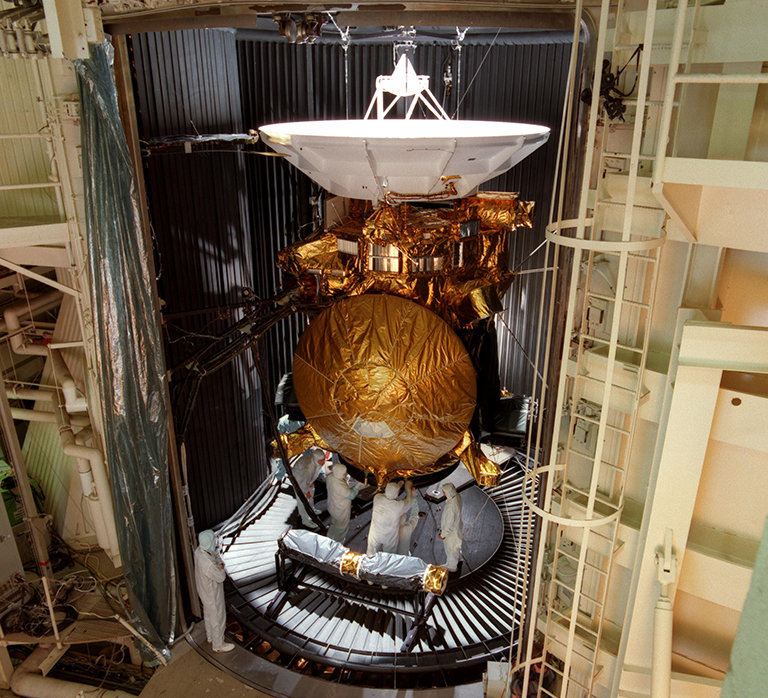
Cassini-Huygens was one of the most ambitious missions ever launched into space. Loaded with an array of powerful instruments and cameras, the spacecraft was capable of taking accurate measurements and detailed images in a variety of atmospheric conditions and light spectra.
The spacecraft was launched with two elements: the Cassini orbiter and the Huygens probe. Cassini-Huygens reached Saturn and its moons in July 2004, beaming home valuable data that transformed our understanding of the Saturnian system. Huygens entered the murky atmosphere of Titan, Saturn's biggest moon, and descended via parachute onto its surface - the most distant spacecraft landing to date.
Cassini-Huygens was a three-axis stabilized spacecraft equipped for 27 diverse science investigations. The Cassini orbiter had 12 instruments and the Huygens probe had six. Equipped to thoroughly investigate all the important elements that the Saturn system may uncover, many of the instruments had multiple functions. The spacecraft communicated through one high-gain and two-low gain antennas. It was only in the event of a power failure or other such emergency situation, however, that the spacecraft communicated through one of its low-gain antennas.
Three Radioisotope Thermoelectric Generators – commonly referred to as RTGs – provided power for the spacecraft, including the instruments, computers, and radio transmitters on board, attitude thrusters, and reaction wheels.
In some ways, the Cassini spacecraft had senses better than our own. For example, Cassini could "see" in wavelengths of light and energy that the human eye cannot. The instruments on the spacecraft could "feel" things about magnetic fields and tiny dust particles that no human hand could detect.
The science instruments can be classified in a way that can be compared to how human senses operate. Your eyes and ears are "remote sensing" devices because you can receive information from remote objects without being in direct contact with them. Your senses of touch and taste are "direct sensing" devices. Your nose can be construed as either a remote or direct sensing device. You can certainly smell the apple pie across the room without having your nose in direct contact with it, but the molecules carrying the scent do have to make direct contact with your sinuses. Cassini's instruments can be classified as remote and microwave remote sensing instruments, and fields and particles instruments – these were all designed to record significant data and take a variety of close-up measurements.
The remote sensing instruments on the Cassini Spacecraft calculated measurements from a great distance. This set included both optical and microwave sensing instruments including cameras, spectrometers, radar and radio.
The fields and particles instruments took "in situ" (on site) direct sensing measurements of the environment around the spacecraft. These instruments measured magnetic fields, mass, electrical charges and densities of atomic particles. They also measured the quantity and composition of dust particles, the strengths of plasma (electrically charged gas), and radio waves.
Cassini Orbiter Instruments
They surveyed and sniffed, analyzed and scrutinized. They took stunning images in various visible spectra. Cassini's 12 science instruments were designed to carry out sophisticated scientific studies of Saturn, from collecting data in multiple regions of the electromagnetic spectrum, to studying dust particles, to characterizing Saturn's plasma environment and magnetosphere.
Optical Remote Sensing
Mounted on the remote sensing pallet, these instruments studied Saturn and its rings and moons in the electromagnetic spectrum.
Fields, Particles and Waves
These instruments studied the dust, plasma and magnetic fields around Saturn. While most didn't produce actual "pictures," the information they collected is critical to scientists' understanding of this rich environment.
Microwave Remote Sensing
Using radio waves, these instruments mapped atmospheres, determined the mass of moons, collected data on ring particle size, and unveiled the surface of Titan.





